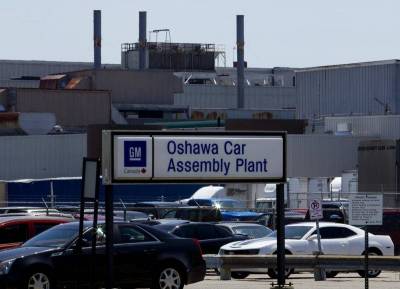
On Monday, November 26, 2018, General Motors announced that it will be closing five plants in North America in 2019, four in the USA and one in Canada. In addition to the closures, 6000 hourly workers and 8000 salaried employees will lose their jobs. “The actions we are taking today continue our transformation to be highly agile, resilient and profitable, while giving us the flexibility to invest in the future,” said GM Chairman and CEO Mary Barra. “We recognize the need to stay in front of changing market conditions and customer preferences to position our company for long-term success.”
The press release goes on to say that “GM has recently invested in newer, highly efficient vehicle architectures, especially in trucks, crossovers and SUVs. GM now intends to prioritize future vehicle investments in its next-generation battery-electric architectures. As the current vehicle portfolio is optimized, it is expected that more than 75 percent of GM’s global sales volume will come from five vehicle architectures by early next decade.”
Thirty-five years ago, I began my career in the trucking industry by working for a company that derived fifty percent of its revenues from the automotive industry. My company worked directly with these plants. I have had the opportunity to visit the GM Oshawa facility on multiple occasions. While there are only 2300 hourly workers that are employed there now, this is an iconic facility in the province of Ontario and in Canada as a whole. This plant has been a symbol to Canadians, for a century, of the importance of the automobile manufacturing and assembly industry.
Working for a trucking company that provided transportation services to this industry, you learn that there are an enormous number of feeder industries that supply parts (i.e. bumpers, hub caps, engines, brakes etc.) and services (i.e. metal stamping, painting parts etc.) to assembly plants such as GM Oshawa and GM Lordstown. In other words, the 2300 hourly jobs in GM Oshawa and are just the “tip of the iceberg.” There are probably 5 or 10 jobs associated with each assembly line job that is impacted by these closures.
While one can question the wisdom and fairness of these decisions, the fact is that the leaders of corporations around the world make these types of decisions every day. Looking back at my career running trucking companies, my colleagues and I made similar decisions, albeit on a smaller scale. While the Canadian union leadership’s public posture to “fight” this decision makes good optics, it is very unlikely that this pronouncement will be changed. In fact, the premier of Ontario and the Prime Minister of Canada have acknowledged that the focus should now be shifted to helping the affected workers by providing retraining and finding other employment opportunities.
One of the first industries that auto workers should explore is the trucking industry. Here is my rationale. The trucking industry is currently short of qualified drivers and mechanics. The average age for experienced drivers in North America is over 50 years. With retirements and the growth in Ecommerce, there are and will continue to be driver shortages.
There are several other reasons why the trucking industry is a good fit for auto workers. First, most truck drivers are paid on an hourly basis and the level of compensation for the two industries is comparable. Second, by virtue of the work performed, most auto workers understand how motor vehicles are assembled and how they work. This is a benefit to both drivers and mechanics. Third, many of the individuals affected by the plant closures are loyal, long service employees. They are people who have mortgages and families and need the work. They are likely to be stable, dependable employees in the trucking industry. Fourth, many of the people affected are mature individuals who with training, could become quality drivers and mechanics. Fifth, they speak English and do not need language training.
Driving a truck is very different from working in an auto parts manufacturing or assembly line job. Truck drivers need to contend with heavy traffic, bad weather, arrogant dispatchers and unappreciative shippers. They also must live with ELD devices that monitor their activities all day long and hours of service regulations which may limit their productivity. On the flip side, I have met many drivers who love the work they do and are very happy performing this function. They enjoy the freedom and the relationships they build with their fellow employees and customers. They realize that they provide an essential service to the economy by keeping supply chains functioning.
My advice to auto workers is as follows. Don’t pin your hopes on GM changing its decisions or opening one of the affected plants in the short term. Since 2019 will come and go quickly, start your job search today. Trucking is only one industry; there are other options open to you. If you believe you would enjoy the life of a truck driver or mechanic, then give the trucking industry some consideration. For those of you who would like to be considered for a position as a driver or mechanic, please send me an e-mail (dan@dantranscon.com) with your name, e-mail address, phone number, city and state/province where you live. For trucking companies looking for drivers and mechanics, please supply me with your company name, your name, e-mail address, phone number, city and state/province where you are located and cities, states and provinces where you need drivers and/or mechanics. I will try to make some matches. Good luck!
To stay up to date on Best Practices in Freight Management, follow me on Twitter @DanGoodwill, join the Freight Management Best Practices group on LinkedIn and subscribe to Dan’s Transportation Newspaper (http://paper.li/DanGoodwill/1342211466).



















